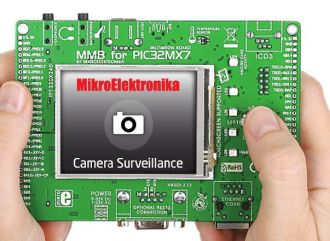
We strongly encourage users to use Package manager for sharing their code on Libstock website, because it boosts your efficiency and leaves the end user with no room for error. [more info]

Rating:
Author: MIKROE
Last Updated: 2011-12-20
Package Version: 1.0.0.0
Category: Ethernet
Downloaded: 2400 times
Followed by: 1 user
License: MIT license
This project shows how you can build your own simple surveillance system, using Network Ethernet Internal Library.
Do you want to subscribe in order to receive notifications regarding "WebcamSurveillance" changes.
Do you want to unsubscribe in order to stop receiving notifications regarding "WebcamSurveillance" changes.
Do you want to report abuse regarding "WebcamSurveillance".
| DOWNLOAD LINK | RELATED COMPILER | CONTAINS |
|---|---|---|
| 1314804703_webcamsurveillan_mikroc_pic32.rar [237.75KB] | mikroC PRO for PIC32 |
|
Description:
-This project show how you can build your own simple Webam Surveillance system on MMB PIC32MX7, using new Network Ethernet Internal Library.
What you need:
-To use this project, you need MMB PIC32MX7, and PC with some webcam. PC and MMB PIC32MX7 must be connected to one ethernet network.
-On PC you must install WebcamSurveillance application (for more details read Read_Me.txt file). This application is written in LabView, and it's purpose is to handle TCP Server and events from webcam on PC. You don't need to have LabView installed on your PC, because installations of LabView Runtime Engine and Vision modules are in installation setup for WebcamSurveillance. Because of that, this installation setup is quite big size (408MB).
Note:
-If you look in Loading Bar on TFT, you can see this is quite fast TCP transfer, because PC send more then 100kB of data (transfer starts when LoadingBar starts to fill).
